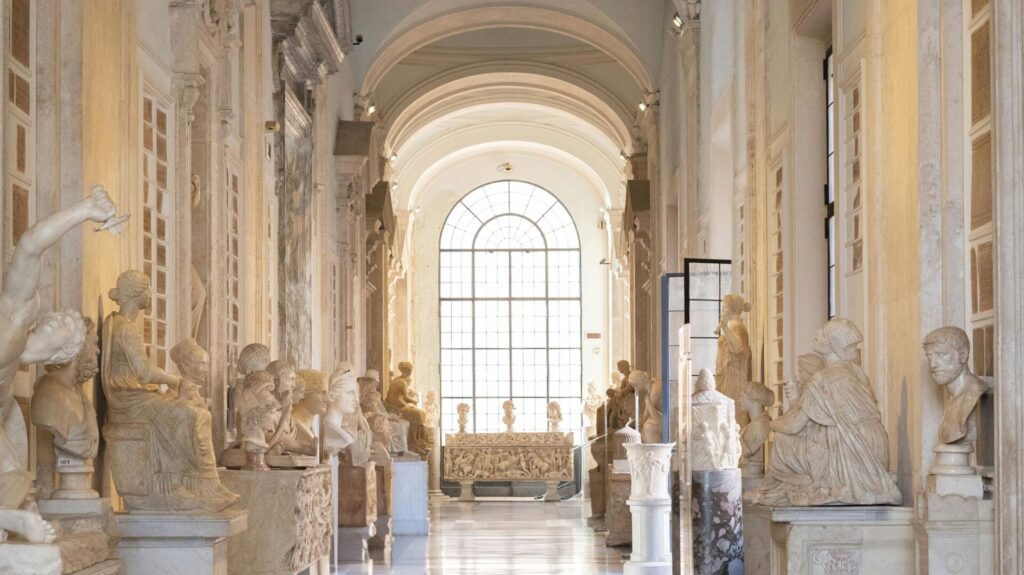Solar control films and sustainability in historic buildings: comfort and well-being without invasive interventions
Windows and glass façades of palaces and historic buildings are part of their architectural identity. However, as they were designed in the past, these openings to the outside now contribute to energy inefficiency as well as thermal and visual discomfort for the people inside.
Indice
How is it possible to improve energy management and comfort without compromising the architectural value and without invasive interventions?
The solution offered by solar control films, ideal for any type of transparent surface, represents a unique opportunity for the energy renovation of a building protected by historical constraints.
The technology of these films, in fact, combines unmatched performance in terms of solar reflection improvement with respect for the integrity and architectural authenticity of a historic palace.
To make spaces with strong cultural value more comfortable for people without altering their structure, low-impact, non-invasive solutions are an invaluable resource.

Protecting architectural value without sacrificing comfort and sustainability
The challenge of preserving architectural heritage is a priority in a context where institutional offices and major administrative headquarters are often located in historic buildings that, however, prove to be energy-intensive environments and, in some cases, even uncomfortable.
Among the most common issues in these spaces is, first of all, overheating during the summer months and beyond, caused by direct solar radiation. Conversely, during the coldest times of the year, there is significant thermal dispersion.
Furthermore, there are numerous criticalities caused by light and glare, especially for workstations near windows: since interior shading or window replacement is often prohibited due to conservation rules, this aspect should not be underestimated.
In such situations, improving the well-being of people working inside is a goal that can only be achieved through non-invasive, barely noticeable interventions that do not alter the architectural structure.
Solar control films are able to meet this need while also offering a considerable improvement in terms of sustainability.
Enhancing historic buildings by solving real problems
The installation of solar control films is done directly on the glass surface, with the advantage of being able to shape the film to fit any required form and apply it to any type of glass.
To be clear, no masonry work is required, so the appearance of the building is not altered in any way.
The real transformation takes place inside.
The incidence of solar rays is directly responsible for the heat generated in indoor environments, creating what is known as the greenhouse effect. For this reason, air conditioning and cooling systems are required to operate under increasingly demanding conditions: reducing the indoor temperature often fails to achieve the desired results and, when it does, it comes at a high energy cost.
The reduction of thermal load is therefore the only practicable solution to act on the costs related to energy consumption.
The application of solar control films addresses the problem at its source by creating a barrier that, thanks to specific technologies, reflects solar energy and effectively helps to reduce indoor temperatures.
Likewise, these types of solutions block UV rays, allowing less than 1% transmission, with the tangible result of protecting and preserving furniture, artworks, and documents that would otherwise be damaged over time by direct sunlight.
The anti-glare effect also improves the visibility of screens and reflective surfaces, helping to make people’s work visually less tiring.
Solar control films: a low-impact solution that requires no invasive intervention
In applying this type of shading, surfaces are not damaged in any way, and an additional advantage is the protection benefit.
Indeed, in the case of weather events such as hail, which can have disastrous effects due to their intensity, solar control films become a valuable ally in providing a protective barrier.
In practice, installation does not affect internal activities or productivity, as it is carried out independently from the outside, without the need to dismantle window frames.
Serisolar relies on highly qualified and specialized technicians who complete the intervention quickly and with expertise.
This is why our guarantee covers both the product and the installation.
Opting for a low-impact solution makes a significant contribution to improving the energy efficiency of historic buildings, playing a role in the overall energy upgrade of the property.
The value of sustainable choices has positive repercussions on multiple levels: from regulatory compliance to cost reduction and strengthening the company’s image and reputation.
Thermal comfort without giving up natural light
People’s well-being in the workplace is not linked solely to the microclimate – meaning the combination of temperature, humidity, and air quality – but also to the presence of natural light.
Windows, glass façades, and skylights are the primary sources of natural light entry as well as solar energy – and therefore heat, as we’ve seen.
The solar shading work performed by the films improves light reflection and thus reduces temperature without obstructing light.
The technology used in the high-end solutions offered by Serisolar maintains very high light transmission.
Improving well-being in workspaces makes them more attractive for talent acquisition and directly contributes to increased productivity.
Energy savings that restore value to historic buildings
Another important aspect to consider is the enhancement of high-profile building assets.
From an economic perspective – as well as a sustainability one – energy renovation with passive shading solutions is an investment that looks to the future.
Reducing the carbon footprint of buildings is a necessity for the productive and corporate world, and when it comes to historic buildings and protected properties, it’s a challenge that only non-invasive, low-impact interventions can overcome.
Serisolar enhances architecture while respecting the environment
With Serisolar, sustainability and indoor microclimate well-being in historic buildings are achieved through high-performing, low-impact solutions.
Technology provides us with the tools, and our consulting service has gained the expertise through experience to help companies, institutions, and professional institutes with headquarters in architecturally valuable buildings achieve concrete goals.
Not all solar control films are the same, but depending on needs and requirements, they represent an indispensable resource for achieving measurable energy performance results.
To learn more about the opportunities of passive solar shading in the context of your historic site, contact us.
Together with our consultants, we can identify the path to achieving major goals in energy renovation and sustainability, improving indoor environments and safeguarding the value of your property.







